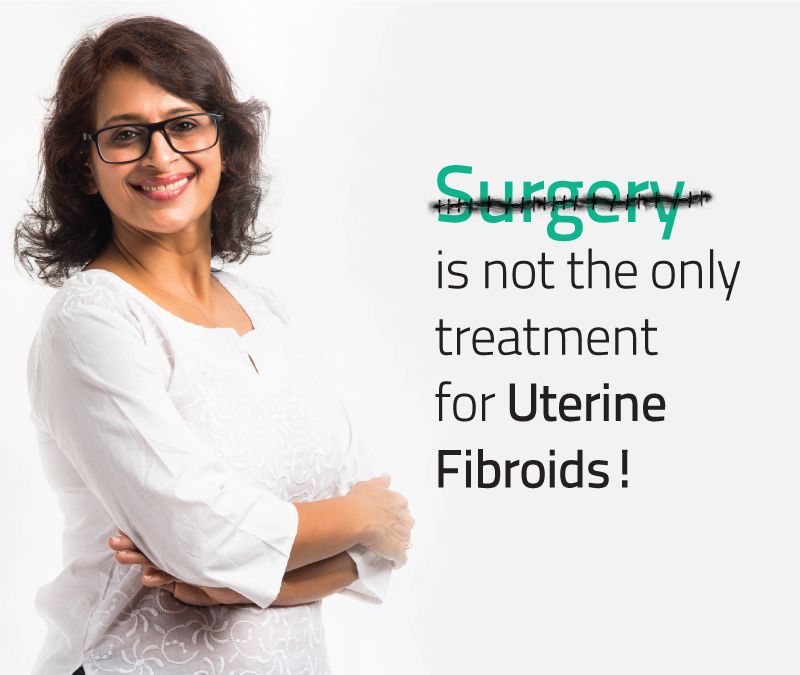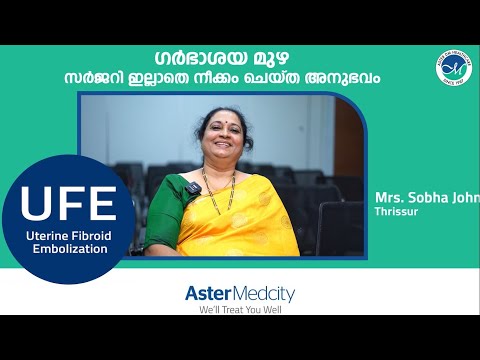Non-Surgical treatment for Uterine Fibroid
Uterine fibroid embolization (UFE) is a minimally invasive procedure used to treat uterine fibroids, which are non-cancerous growths that develop in the uterus. During the procedure, an interventional radiologist will make a small incision in the groin area and insert a thin, flexible tube called a catheter into the artery that supplies blood to the uterus. The doctor will then use X-ray imaging to guide the catheter to the small arteries that feed the fibroids. Small particles are injected through the catheter into the arteries to block blood flow to the fibroids, causing them to shrink and die.
The procedure is typically performed with minimal anesthesia support and require very less hospital stay. Recovery time is usually a few days, and most women can return to normal activities within a week.
UFE is an effective alternative to surgery for many women with uterine fibroids and has a lower risk of complications and shorter recovery time compared to surgical options such as hysterectomy or myomectomy. However, UFE may not be suitable for all women, and it's important to discuss the potential risks and benefits with a healthcare provider.
Why and when UFE is recommended?
Uterine fibroid embolization (UFE) is typically recommended for women who have symptomatic fibroids that are causing significant pain, heavy bleeding, or other issues. Symptoms of fibroids can vary, but some common ones include:
- Heavy or prolonged menstrual periods
- Pelvic pain or pressure
- Difficulty emptying the bladder or bowel
- Back or leg pain
- Painful sexual intercourse
UFE may be recommended as an alternative to surgery, particularly for women who want to preserve their uterus and fertility. UFE has been shown to be effective in shrinking fibroids and reducing symptoms in many women. It also has a lower risk of complications and shorter recovery time compared to surgical options such as hysterectomy or myomectomy.
However, UFE may not be suitable for all women. For example, women who are pregnant or planning to become pregnant soon may not be good candidates for the procedure. It's important to discuss the potential risks and benefits of UFE with a healthcare provider to determine if it's the right option for you.
How is UFE different from the conventional treatment?
Uterine fibroid embolization (UFE) is a minimally invasive alternative to conventional treatments for uterine fibroids, such as hysterectomy or myomectomy.
Hysterectomy is a surgical procedure that involves removing the entire uterus, while myomectomy involves removing only the fibroids. Both procedures require general anaesthesia and a hospital stay, and recovery time can be several weeks.
In contrast, UFE is a minimally invasive procedure that can be performed on an outpatient basis. The procedure involves blocking the blood supply to the fibroids, causing them to shrink and die over time.
This is accomplished by injecting small particles into the arteries that supply blood to the fibroids, using X-ray guidance.
Compared to conventional treatments, UFE has several advantages:
- It is less invasive and does not require general anesthesia.
- Recovery time is typically shorter.
- There is a lower risk of complications, such as infection or blood loss.
- The uterus is preserved, which is important for women who want to maintain their fertility.
How is life after UFE?
After a uterine fibroid embolization (UFE) procedure, most women experience relief from the symptoms caused by their fibroids, such as heavy bleeding, pelvic pain or pressure, and frequent urination. In general, women can expect to resume their normal activities within two weeks after the procedure, although recovery time may vary depending on individual circumstances.
Some women may experience mild to moderate pain or cramping for a few days after the procedure and may be prescribed pain medications to manage this.
It's important to avoid strenuous activity for several days after the procedure, and to avoid lifting heavy objects for a week or two. Most women can return to work within a few days to a week, depending on the type of work they do.
In the months following UFE, the fibroids will gradually shrink and die, and symptoms should continue to improve. In general, UFE is a safe and effective treatment option for many women with uterine fibroids, and can lead to significant improvements in quality of life.
FAQs
At Aster Hospitals we provide the highest quality of care and a transformative experience for all your healthcare needs. With our network of multi-speciality hospitals, specialised doctors, and world-class technology, we bring global standards of medical care to our patients.
What are the benefits of UFE?
Patients who undergo uterine fibroid embolization typically notice decreased bleeding, pelvic pain and pressure, and other symptoms of uterine fibroids, as well as an overall significant improvement in physical and emotional well-being.
Who is not a good candidate for uterine fibroid embolization?
Patients should discuss their ability to proceed with UFE with their provider. Patients with an active pelvic infection, certain uncorrectable bleeding problems, endometrial cancer, extremely large fibroids, or a desire for fertility preservation are poor candidates for this procedure.
Is uterine fibroid embolization safe?
Uterine Artery Embolization: A Safe and Effective, Minimally Invasive, Uterine-Sparing Treatment Option for Symptomatic Fibroids.
Is fibroid embolization effective?
Uterine fibroid embolization is a very effective procedure with an approximate success rate of 85%. Most individuals who undergo the procedure have a dramatic improvement in their symptoms and a decrease in size of their uterine fibroids.
Patient Stories
Our patients are our best advocates, hear the inspiring stories of their treatment journey



